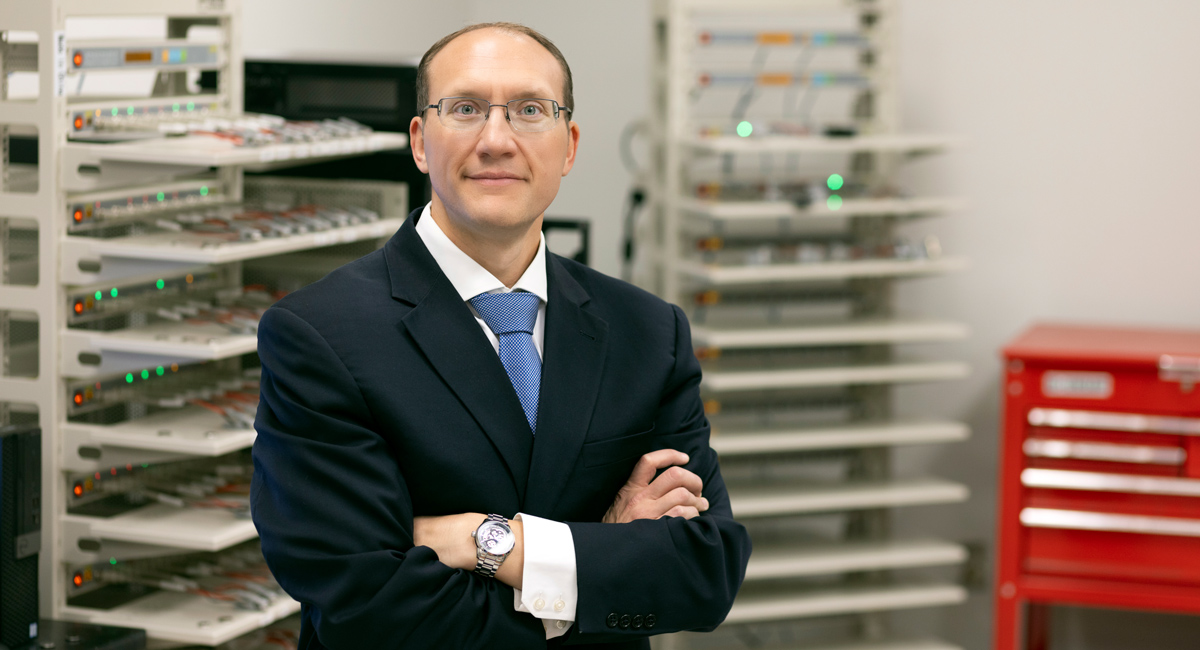In the past two years, companies focused on battery development and electric vehicles have invested around $11 billion in the Palmetto State. It’s a testament to the surging growth in that technology sector and highlights the research collaboration many of those companies have with the University of South Carolina, which has more than a dozen faculty members and scores of graduate and undergraduate students engaged in battery and battery-related research.
“Companies tell me this all the time — if you want to learn more about battery chemistry, battery assembly and battery safety, you come to the University of South Carolina,” says William Mustain, associate dean for research in USC’s College of Engineering and Computing and a professor of chemical engineering with a strong focus on battery research.
“As a university, we’ve been investing in battery research for 30 years. When I came here in 2017, I felt like I was joining a big collaborative team — and it’s getting even bigger.”
But USC’s footprint in next-generation energy research goes beyond batteries. Several faculty members are involved in various aspects of energy generation, including small modular nuclear reactor development, and many more are focused on advanced manufacturing in the university’s McNair Center for Aerospace Innovation and Research.
That’s why USC is one of seven core members of SC Nexus, a public-private consortium led by the state Department of Commerce that recently won a federal Tech Hub designation to focus on advanced energy technology, including batteries, small modular reactors and the electric grid.
"Companies tell me this all the time — if you want to learn more about battery chemistry, battery assembly and battery safety, you come to the University of South Carolina."
“The timing for SC Nexus is perfect not just for the state of South Carolina, but also for the University of South Carolina,” Mustain says. “It feels to me like the SC Nexus proposal was written for USC to take a leadership role.”
The university has already demonstrated its research prowess in energy technology through collaborations with a long list of clients, including General Motors, Duracell, Nant Energy and the U.S. Army.
“In the past few years, USC has managed about $15 million in externally funded battery research, with a nice combination of support from industry and the federal government,” Mustain says.
One of the university’s most recent private-sector grants for battery research is a collaborative effort with Pomega Energy Storage Technologies, which announced late last year its plans to build a battery manufacturing facility in Colleton County focused on grid- and home-scale systems. Several faculty members in chemical engineering and chemistry are conducting anode and cathode research and battery modeling for the firm.
In the electric vehicle market, advances in battery technology have assuaged so-called range anxiety — the concern over how many miles an EV can travel before recharging.
“You can now buy an EV with a range of 400 to 500 miles,” says Xinyu Huang, a chemical engineering professor at USC who studies materials and applied mechanics in batteries and nuclear fuel. “That’s the same as a tank of gas.”

But concerns persist over the reliability of EV batteries, and part of Huang’s research is focused on safety issues, working with General Motors to determine the failure threshold for EV batteries in adverse conditions.
“If there’s a crash and the battery is squeezed, GM wants to know how much is tolerable. So, we’ve designed experiments with hundreds of batteries to figure out what’s allowable and what’s risky,” Huang says. “When their team worked on chassis design around the battery pack, our experimental data provided safe deformation threshold during various impact scenarios.”
Huang is also collaborating with Soteria, a Greenville, S.C.-based company developing technology to make lithium-ion batteries — the type used in EVs — safer in the event of crashes. Damage to EV batteries can create short circuits and thermal runaway, which can quickly lead to catastrophic fire and explosions.
The constant push to improve battery technology and safety is being driven, in part, by academic research teams around the world, and advances are coming at a steady pace, says Goli Jalilvand, a chemical engineering assistant professor.
“I go to Electrochemical Society meetings every six months — the most recent was in Sweden — and it just blows my mind the collective progress that’s happening in battery research,” she says.
Much of Jalilvand’s current battery research is focused on development of lithium-sulfur batteries, an alternative to the lithium-ion technology widely used in EVs. Sulfur is cheap, abundant and theoretically has five times higher energy density than current commercial battery cathodes, she says.
“It’s not the best candidate for fast-charging EVs, but it could be much better for heavy trucks that could charge overnight and then run for two days because the energy density is much higher,” Jalilvand says, adding that one of her main sponsors is fully focused on lithium-sulfur technology.

